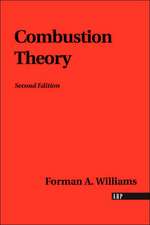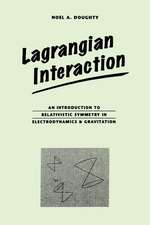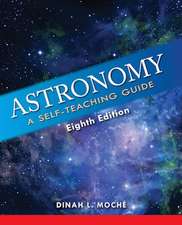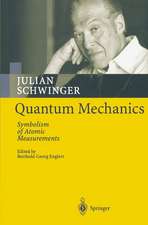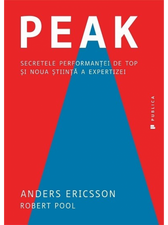Classical Electrodynamics: Frontiers in Physics
Autor Julian Schwinger, Lester L. Deraad Jr., Kimball Milton, Wu-Yang Tsaien Limba Engleză Hardback – 11 sep 1998
Classical Electrodynamics captures Schwinger's inimitable lecturing style, in which everything flows inexorably from what has gone before. Novel elements of the approach include the immediate inference of Maxwell's equations from Coulomb's law and (Galilean) relativity, the use of action and stationary principles, the central role of Green's functions both in statics and dynamics, and, throughout, the integration of mathematics and physics. Thus, physical problems in electrostatics are used to develop the properties of Bessel functions and spherical harmonics. The latter portion of the book is devoted to radiation, with rather complete treatments of synchrotron radiation and diffraction, and the formulation of the mode decomposition for waveguides and scattering. Consequently, the book provides the student with a thorough grounding in electrodynamics in particular, and in classical field theory in general, subjects with enormous practical applications, and which are essential prerequisites for the study of quantum field theory.An essential resource for both physicists and their students, the book includes a ”Reader's Guide,” which describes the major themes in each chapter, suggests a possible path through the book, and identifies topics for inclusion in, and exclusion from, a given course, depending on the instructor's preference. Carefully constructed problems complement the material of the text, and introduce new topics. The book should be of great value to all physicists, from first-year graduate students to senior researchers, and to all those interested in electrodynamics, field theory, and mathematical physics.The text for the graduate classical electrodynamics course was left unfinished upon Julian Schwinger's death in 1994, but was completed by his coauthors, who have brilliantly recreated the excitement of Schwinger's novel approach.
Din seria Frontiers in Physics
- 8%
 Preț: 431.95 lei
Preț: 431.95 lei - 8%
 Preț: 543.19 lei
Preț: 543.19 lei - 8%
 Preț: 389.76 lei
Preț: 389.76 lei -
 Preț: 402.56 lei
Preț: 402.56 lei - 8%
 Preț: 489.17 lei
Preț: 489.17 lei - 8%
 Preț: 378.89 lei
Preț: 378.89 lei - 15%
 Preț: 590.36 lei
Preț: 590.36 lei - 15%
 Preț: 540.06 lei
Preț: 540.06 lei - 15%
 Preț: 489.52 lei
Preț: 489.52 lei - 15%
 Preț: 461.03 lei
Preț: 461.03 lei - 15%
 Preț: 579.57 lei
Preț: 579.57 lei - 15%
 Preț: 427.16 lei
Preț: 427.16 lei - 15%
 Preț: 461.03 lei
Preț: 461.03 lei - 15%
 Preț: 427.16 lei
Preț: 427.16 lei - 45%
 Preț: 193.07 lei
Preț: 193.07 lei - 18%
 Preț: 1000.27 lei
Preț: 1000.27 lei - 15%
 Preț: 540.06 lei
Preț: 540.06 lei - 57%
 Preț: 175.36 lei
Preț: 175.36 lei - 15%
 Preț: 577.16 lei
Preț: 577.16 lei - 15%
 Preț: 421.94 lei
Preț: 421.94 lei - 28%
 Preț: 1047.06 lei
Preț: 1047.06 lei - 15%
 Preț: 568.28 lei
Preț: 568.28 lei -
 Preț: 375.44 lei
Preț: 375.44 lei - 27%
 Preț: 1054.39 lei
Preț: 1054.39 lei - 15%
 Preț: 669.94 lei
Preț: 669.94 lei - 15%
 Preț: 578.10 lei
Preț: 578.10 lei - 15%
 Preț: 460.90 lei
Preț: 460.90 lei - 18%
 Preț: 1005.34 lei
Preț: 1005.34 lei - 63%
 Preț: 144.53 lei
Preț: 144.53 lei - 58%
 Preț: 162.04 lei
Preț: 162.04 lei - 18%
 Preț: 1000.27 lei
Preț: 1000.27 lei - 8%
 Preț: 433.88 lei
Preț: 433.88 lei - 15%
 Preț: 566.73 lei
Preț: 566.73 lei - 18%
 Preț: 1273.66 lei
Preț: 1273.66 lei
Preț: 768.95 lei
Preț vechi: 845.00 lei
-9% Nou
Puncte Express: 1153
Preț estimativ în valută:
147.18€ • 159.93$ • 123.72£
147.18€ • 159.93$ • 123.72£
Carte tipărită la comandă
Livrare economică 22 aprilie-06 mai
Preluare comenzi: 021 569.72.76
Specificații
ISBN-13: 9780738200569
ISBN-10: 0738200565
Pagini: 596
Dimensiuni: 156 x 234 x 37 mm
Greutate: 1.02 kg
Ediția:1
Editura: CRC Press
Colecția CRC Press
Seria Frontiers in Physics
ISBN-10: 0738200565
Pagini: 596
Dimensiuni: 156 x 234 x 37 mm
Greutate: 1.02 kg
Ediția:1
Editura: CRC Press
Colecția CRC Press
Seria Frontiers in Physics
Public țintă
Postgraduate and UndergraduateCuprins
Preface, Reader's Guide, 1 Maxwell's Equations, 2 Magnetic Charge I, 3 Conservation Laws, 4 Macroscopic Electrodynamics, 5 Simple Model for Constitutive Relations, 6 Magnetic Properties of Matter, 7 Macroscopic Energy and Momentum, 8 Review of Action Principles, 9 Action Principle for Electrodynamics, 10 Einsteinian Relativity, 11 Stationary Principles for Electrostatics, 12 Introduction to Green's Functions, 13 Electrostatics in Free Space, 14 Semi-Infinite Dielectric, 15 Application of Green's Function, 16 Bessel Functions, 17 Parallel Conducting Plates, 18 Modified Bessel Functions, 19 Cylindrical Conductors, 20 Spherical Harmonics, 21 Coulomb's Potential, 22 Multipoles, 23 Conducting and Dielectric Spheres, 24 Dielectrics and Conductors, 25 Modes and Variations, 26 Magnetostatics, 27 Macroscopic Current Distributions, 28 Magnetic Multipoles, 29 Magnetic Scalar Potential, 30 Magnetic Charge II, 31 Retarded Green's Function, 32 Radiation-Field Point of View, 33 Radiation-Source Point of View, 34 Models of Antennas, 35 Spectral Distribution of Radiation, 36 Power Spectrum and Cerenkov Radiation, 37 Constant Acceleration and Impulse, 38 Synchrotron Radiation I, 39 Synchrotron Radiation II-Polarization, 40 Synchrotron Radiation III-High Energies, 41 Propagation in a Dielectric Medium, 42 Reflection by an Imperfect Conductor, 43 Cylindrical Coordinates, 44 Waveguides, 45 Scattering by Small Obstacles, 46 Partial-Wave Analysis of Scattering, 4 7 Diffraction I, 48 Diffraction II, 49 Babinet's Principle, 50 General Scattering, 51 Dispersion Relations for the Susceptibility, 52 Charged Particle Energy Loss, A Units, B Bibliography, Index
Notă biografică
Julian Schwinger (1918-1994) was born in New York City. He obtained his Ph.D. in Physics from Columbia University in 1939. He also received honorary doctorates in science from Purdue, Brandeis, Harvard, and Gustavus Adolphus College. He taught at the University of California, Los Angeles, from 1972 until his death. In 1965, Dr. Schwinger received (with Richard Feynman and Sin Itiro Tomonaga) the Nobel Prize in Physics for his work in quantum electrodynamics. A National Research Foundation Fellow (1939-1940) and a Guggenheim Fellow (1970), he was the recipient of many awards, including: the First Einstein Prize Award for Physics (1964), and the American Academy of Achievement Award (1987). The late Julian Schwinger shared the 1965 Nobel Prize for Physics with Richard Feynman and Sin-Itiro Tomonaga for their work on the theory of quantum electrodynamics. Lester L. DeRaad, Jr. is Senior Research Specialist at Logicon RDA. Kimball A Milton is Professor of Physics at the University of Oklahoma, Norman. Wu-yang Tsai is Scatterometer Project Engineer and Group Supervisor at the Jet Propulsion Laboratory in Pasadena, California. The late Julian Schwinger shared the 1965 Nobel Prize for Physics with Richard Feynman and Sin-Itiro Tomonaga for their work on the theory of quantum electrodynamics. Lester L. DeRaad, Jr. is Senior Research Specialist at Logicon RDA. Kimball A Milton is Professor of Physics at the University of Oklahoma, Norman. Wu-yang Tsai is Scatterometer Project Engineer and Group Supervisor at the Jet Propulsion Laboratory in Pasadena, California. The late Julian Schwinger shared the 1965 Nobel Prize for Physics with Richard Feynman and Sin-Itiro Tomonaga for their work on the theory of quantum electrodynamics. Lester L. DeRaad, Jr. is Senior Research Specialist at Logicon RDA. Kimball A Milton is Professor of Physics at the University of Oklahoma, Norman. Wu-yang Tsai is Scatterometer Project Engineer and Group Supervisor at the Jet Propulsion Laboratory in Pasadena, California. The late Julian Schwinger shared the 1965 Nobel Prize for Physics with Richard Feynman and Sin-Itiro Tomonaga for their work on the theory of quantum electrodynamics. Lester L. DeRaad, Jr. is Senior Research Specialist at Logicon RDA. Kimball A Milton is Professor of Physics at the University of Oklahoma, Norman. Wu-yang Tsai is Scatterometer Project Engineer and Group Supervisor at the Jet Propulsion Laboratory in Pasadena, California.
Descriere
Classical Electrodynamics captures Schwinger's inimitable lecturing style, in which everything flows inexorably from what has gone before. Novel elements of the approach include the immediate inference of Maxwell's equations from Coulomb's law and (Galilean) relativity, the use of action and stationary principles, the central role of Green's functions both in statics and dynamics, and, throughout, the integration of mathematics and physics. Thus, physical problems in electrostatics are used to develop the properties of Bessel functions and spherical harmonics. The latter portion of the book is devoted to radiation, with rather complete treatments of synchrotron radiation and diffraction, and the formulation of the mode decomposition for waveguides and scattering. Consequently, the book provides the student with a thorough grounding in electrodynamics in particular, and in classical field theory in general, subjects with enormous practical applications, and which are essential prerequisites for the study of quantum field theory.An essential resource for both physicists and their students, the book includes a ”Reader's Guide,” which describes the major themes in each chapter, suggests a possible path through the book, and identifies topics for inclusion in, and exclusion from, a given course, depending on the instructor's preference. Carefully constructed problems complement the material of the text, and introduce new topics. The book should be of great value to all physicists, from first-year graduate students to senior researchers, and to all those interested in electrodynamics, field theory, and mathematical physics.The text for the graduate classical electrodynamics course was left unfinished upon Julian Schwinger's death in 1994, but was completed by his coauthors, who have brilliantly recreated the excitement of Schwinger's novel approach.







